Tchogha Zanbil Ziggurat, a masterpiece of Iranian brick architecture
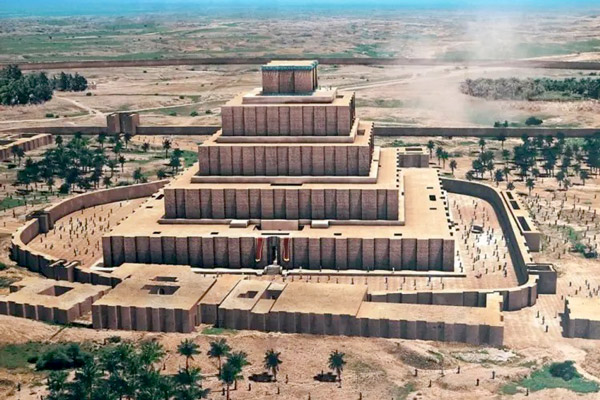
Tchogha Zanbil Ziggurat is the oldest and most magnificent brick structure in Iran. Due to specific reasons discussed here, it is considered one of the masterpieces of Iranian brick architecture. Stay with us through this article to learn everything about this enduring monument and the fascinating story of its burial and rediscovery after many years.
Brick in Iran
A glance at Iranian architecture reveals the grandeur of its works. Among these numerous unique structures, many are built with bricks. In fact, brick architecture has long been popular in Iran and has been appreciated in all eras.
Brick, after stone, is one of the oldest materials used by humans. The history of brick architecture in Iran is ancient and dates back to before the Babylonian Empire.
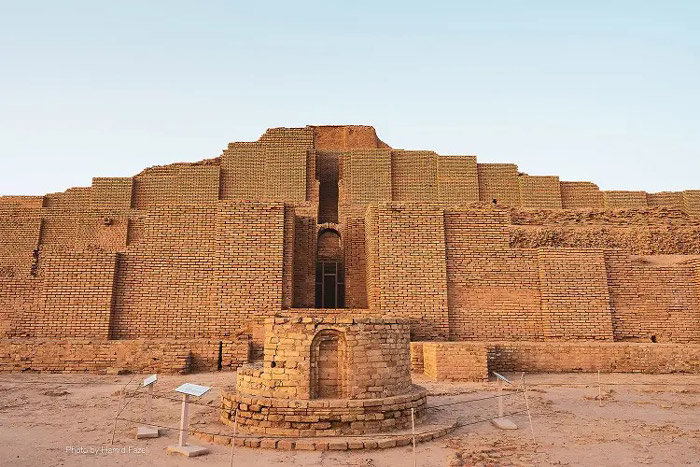
According to available evidence and studies, the first people to use bricks in Iran were the inhabitants of Mesopotamia and Khuzestan. The primary reason for this was their lack of access to materials like wood, prompting them to use earth for construction.
Looking back at ancient Iranian architecture, it’s clear that the use of bricks extended beyond mere wall-building and construction. Bricks were employed for facades, structural frameworks, wall and ceiling decoration, flooring, and even ornamental purposes.
At Tchogha Zanbil Ziggurat, for example, inscribed bricks on the walls were among the main decorative elements—something rarely seen elsewhere in the world. For this reason, many reliable architectural sources regard Iranians as key contributors to the development and expansion of brick usage globally.
One of the masterpieces of Iranian brick architecture is the Tchogha Zanbil Ziggurat. In fact, the oldest and largest brick architectural structure in Iran dates back to the Elamite civilization and is this very ziggurat.
Chogha Zanbil Ziggurat: A Masterpiece of Brick Architecture
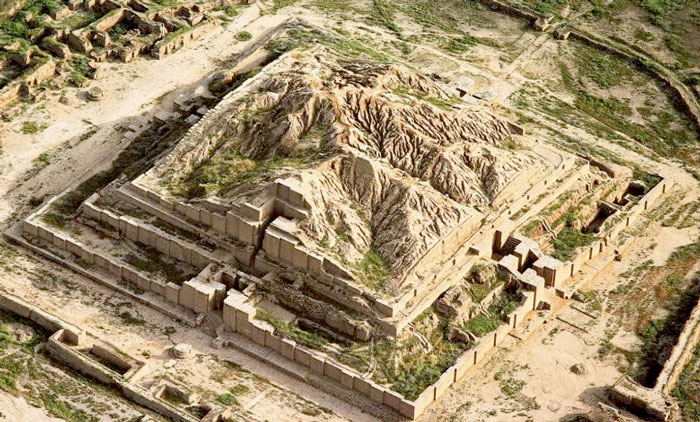
This historical structure, dating back to 1250 BCE and symbolizing the Elamite civilization, is listed as a National Heritage Site of Iran and a UNESCO World Heritage Site. Notably, Tchogha Zanbil is the first Iranian site ever inscribed on the UNESCO World Heritage List.
But what does “ziggurat” mean?
In the past, tombs, pyramids, multi-tiered temples, and domed buildings were referred to as ziggurats. These structures also housed statues of gods. This helps us better understand the overall nature of Tchogha Zanbil.
The ziggurat was built by an Elamite king named Untash-Napirisha on the highest point of the city, and as mentioned, it was a temple. Many archaeologists consider it the first religious structure in Iran.
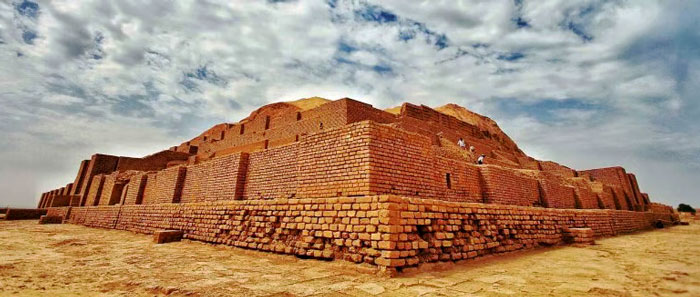
At the time, people believed that the deity ascended to and descended from the heavens through this site. This belief is also the reason it was built on the highest point of the city.
Tchogha Zanbil is a square-shaped structure. By analyzing the pyramid’s slope, researchers concluded that it originally had five tiers. Geographically, Tchogha Zanbil is located in Khuzestan Province, in the city of Shush (Susa), 115 kilometers from Ahvaz.
At that time, the site was called Dur Untash, meaning “Untash’s fortress,” and was dedicated to the gods, especially Inshushinak. An inscription recovered from the site reads:
“I, Untash-Napirisha, son of Humban-Numena, king of Susa and Anshan, desire a prosperous life. With this intention, I built a high temple of brick and dedicated it to the god Inshushinak. May this deed be accepted by Inshushinak.”
Beyond its stunning brick architecture, what makes this ancient site particularly fascinating is its advanced water supply and purification system, including a 45-kilometer canal from the Karkheh River. The existence of an observatory at the site adds even more to its wonders.
The Discovery of Chogha Zanbil Ziggurat
This historic monument was destroyed by the Assyrians before its construction was completed. At the time, only a few priests resided there. Today, only two levels of the original five remain. Some historians believe that construction ceased after the king’s death, though the site continued to serve as a pilgrimage center for years afterward.
After its destruction by the last Assyrian king, the temple was buried under soil. Its mound-like appearance is due to this. Many years later, it was excavated by French archaeologist Roman Ghirshman. During the excavation, inscribed bricks were discovered, revealing rich literary content from that time.
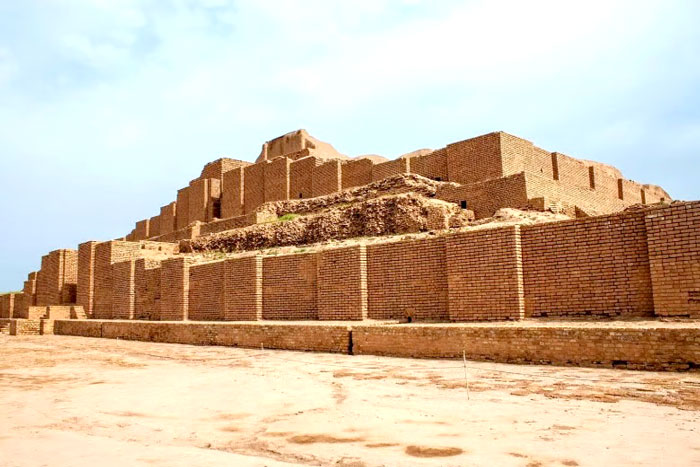
A natural question is, how was this buried structure discovered after so many years?
Several hundred years after the destruction, in 1890, geological studies revealed oil in the area, drawing attention to the region. Around 60 years later, during oil exploration, a brick was found—this discovery became the key clue that led to finding the main structure.
The Name “Tchogha Zanbil”
The combination of the words “ziggurat” and “Tchogha Zanbil” might seem confusing. The name is derived from the structure’s post-excavation appearance—it resembled an upside-down basket on a hill. In the Luri language, “Chogha” means isolated hill, and “Zanbil” means basket. As previously mentioned, “ziggurat” in the Elamite language refers to a temple.
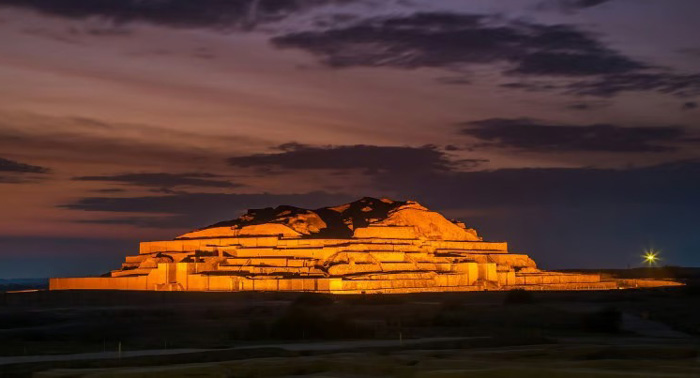
The Brick Architecture of Tchogha Zanbil
Mudbrick was the primary material used in building Tchogha Zanbil. Fired brick was then used as a protective layer to prevent erosion. In ancient Iran, the use of brick in important buildings was common due to its durability and strength. Besides Tchogha Zanbil, many structures in the city of Susa were made with mudbrick and brick, and their remnants remain today.
The ziggurat’s facade features ten rows of plain bricks, followed by a row of inscribed bricks. As previously mentioned, bricks were used not only for structure and decoration but also for writing royal decrees. Evidence shows the Elamites used script as ornamentation, and over 5,000 inscribed bricks in Elamite script confirm this.
The design of Tchogha Zanbil is rooted in traditional Iranian culture and architecture. In general, brick architecture evokes the proud legacy of ancient Iran for its people. It’s no surprise that brick remains highly esteemed in Iranian construction.
Conclusion
In this article, we explored everything about Iran’s oldest and largest brick structure, the Tchogha Zanbil Ziggurat, including its burial and rediscovery. With deeper understanding of enduring Iranian architecture, one can clearly see the vital role of brick. This is why traditional Iranian architectural styles are regaining attention today, and the use of bricks and brick facades is steadily increasing as people seek to revive authentic values.








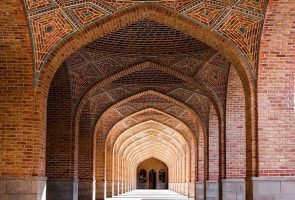
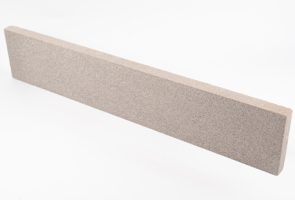
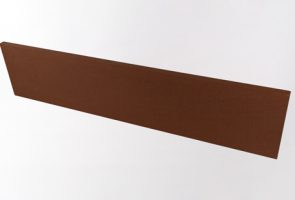


Comments
Your feedback is important to us. Please share comments or ask questions you haven’t found the answer to yet.